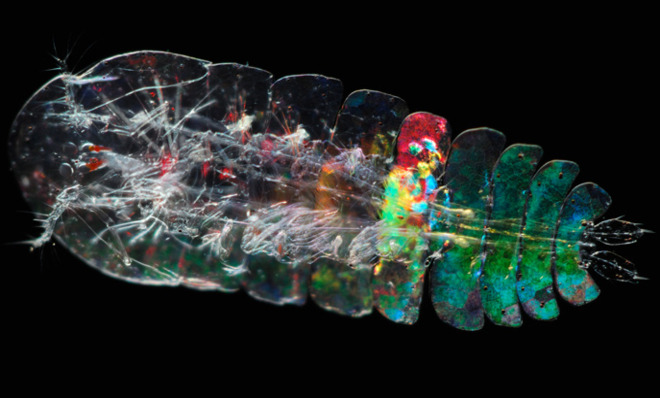Sea sapphires: The most beautiful animal you've never seen
Japanese fisherman have a name for their shimmering: "tama-mizu," jeweled water


When I first saw a sea sapphire, I thought I was hallucinating. The day had been anything but normal, but this part will always stand out. I had spent the afternoon on a small dingy off the coast of Durban, South Africa. It was muggy, and I had been working for hours — throwing a small net out and pulling in tiny hauls of plankton to put in jars.
As I looked through one jar, the boat rocking up and down, I saw a bright blue flash. It lasted for an instant and then it was gone. Then I saw another one in a different place. It was an incredible shade of blue. Maybe I had been in the sun too long? Maybe I was seeing things? It wasn't until I got back to the lab that I discovered the true beauty and mystery of these radiant flashes.
Meet one of the most beautiful animals I have ever seen:
The Week
Escape your echo chamber. Get the facts behind the news, plus analysis from multiple perspectives.

Sign up for The Week's Free Newsletters
From our morning news briefing to a weekly Good News Newsletter, get the best of The Week delivered directly to your inbox.
From our morning news briefing to a weekly Good News Newsletter, get the best of The Week delivered directly to your inbox.
The small creature is a Sapphirina copepod (or, in short, a sea sapphire). Copepods are the rice of the sea — tiny, shrimp-like animals at the base of the ocean food chain. And, like rice, they are generally not known for their charisma.
Sea sapphires are an exception among copepods. Though they are often small, a few millimeters, they are stunningly beautiful. Like their namesake gem, different species of sea sapphire shine in different hues, from bright gold to deep blue. Africa isn't the only place they can be found. I have since seen them off the coasts of Rhode Island and California in the U.S. When they are abundant near the water's surface, the sea shimmers like diamonds falling from the sky. Japanese fishermen of old had a name for this, "tama-mizu", jeweled water.
The reason for their shimmering beauty is both complex and mysterious, relating to their unique social behavior and strange crystalline skin. A key clue is that these flashes are only seen in males.
Males live free in the water column, but females make their home in the crystal palaces of strange, barrel-shaped jellies called salps. And though they are not flashy, these parasitic princesses have huge eyes relative to males.
A free daily email with the biggest news stories of the day – and the best features from TheWeek.com
Perhaps female sea sapphires look out upon an endless expanse of ocean sparkling with blue and gold, searching for a particularly luminous shine. Or it could be that males use their shimmer to compete with one another, like jousting knights in shining armor, while the females watch on. But how do they shine in the first place?
The secret to the sea sapphire's shine is in microscopic layers of crystal plates inside their cells. In the case of blue sea sapphires, these crystal layers are separated by only about 4/10000ths of a millimeter — about the same distance as the wavelength of blue light.
When blue light bounces off these crystal layers, it is perfectly preserved and reflected. But for other colors of light, these small differences in distance interfere, causing the colors to cancel out. So while white light is composed of all colors, only blue light is reflected back. This type of coloration is known as structural coloration, and though resembling a gem in hue, a sea sapphire's color has more in common with an oil sheen than a pigmented jewel. Combine this nifty trick with the sea sapphire's impressively transparent body, and you have an animal as radiant as a star in one moment, and invisible in the next.
I was lucky to find one, but sometimes they are found in astonishing numbers. My friend and colleague Erik Thuesen once told me about his work on an underwater vessel. As the submersible was coming to the surface, he said, "it passed through this amazingly sparkling layer of iridescent Sapphrina." A rare sight to see; not, perhaps, due to the rarity of these ocean gems, but the rarity at which we enter their world.
More from The Conversation:
-
 How drones have detected a deadly threat to Arctic whales
How drones have detected a deadly threat to Arctic whalesUnder the radar Monitoring the sea in the air
-
 A running list of the US government figures Donald Trump has pardoned
A running list of the US government figures Donald Trump has pardonedin depth Clearing the slate for his favorite elected officials
-
 Ski town strikers fight rising cost of living
Ski town strikers fight rising cost of livingThe Explainer Telluride is the latest ski resort experiencing an instructor strike